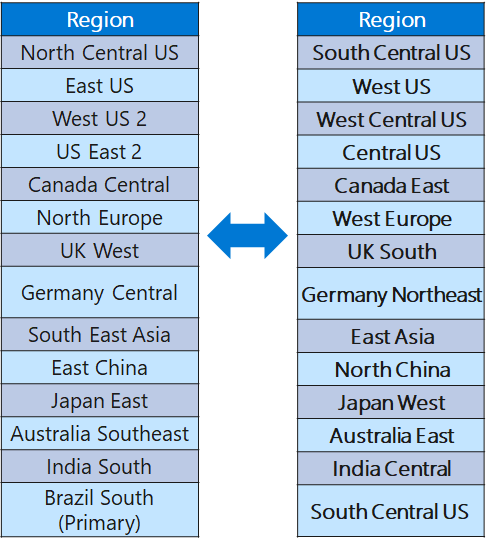Explore region pairs
*This article could be a summary of content for learning purposes. For more information and knowledge, read the original articles in the References section.It’s possible that a large enough disaster could cause an outage large enough to affect even two datacenters. That’s why Azure creates region pairs. Each Azure region is paired with another region within the same geography (such as US, Europe, or Asia) at least 300 miles away, which together make a region pair. The exception is Brazil South, which is paired with a region outside its geography.

Things to know about regional pairs:
- Physical isolation: When possible, Azure prefers at least 300 miles of separation between datacenters in a regional pair, although this isn’t practical or possible in all geographies. Physical datacenter separation reduces the likelihood of natural disasters, civil unrest, power outages, or physical network outages affecting both regions at once.
- Platform-provided replication: Some services such as Geo-Redundant Storage provide automatic replication to the paired region.
- Region recovery order: In the event of a broad outage, recovery of one region is prioritized out of every pair. Applications that are deployed across paired regions are guaranteed to have one of the regions recovered with priority.
- Sequential updates: Planned Azure system updates are rolled out to paired regions sequentially (not at the same time) to minimize downtime, the effect of bugs, and logical failures in the rare event of a bad update.
References
Related Posts
Quick Links
Legal Stuff

 Buy us a coffe
Buy us a coffe